core dump管理在linux中的前世今生
目录
一、什么是core dump?
二、coredump是怎么来的?
三、怎么限制coredump文件的产生?
ulimit
半永久限制
永久限制
四、从源码分析如何对coredump文件的名字和路径管理
命名
管理
一些问题的答案
1、为什么新的ubuntu不能产生coredump了,需要手动管理?
2、systemd是什么时候出现在ubuntu中的?
3、为什么使用脚本管理coredump后ulimit就不能限制coredump文件的大小了。
4、为什么ulimit限制的大小并不准确?
5、使用脚本就没办法限制coredump的大小了嘛?
6、ubuntu现在对coredump文件的管理方式
一、什么是core dump?
core dump是Linux应用程序调试的一种有效方式,core dump又称为“核心转储”,是该进程实际使用的物理内存的“快照”。分析core dump文件可以获取应用程序崩溃时的现场信息,如程序运行时的CPU寄存器值、堆栈指针、栈数据、函数调用栈等信息。在嵌入式系统开发中是开发人员调试所需必备材料之一。每当程序异常行为产生coredump时我们就可以利用gdb工具去查看程序崩溃的原因。
二、coredump是怎么来的?
Core dump是Linux基于信号实现的。Linux中信号是一种异步事件处理机制,每种信号都对应有默认的异常处理操作,默认操作包括忽略该信号(Ignore)、暂停进程(Stop)、终止进程(Terminate)、终止并产生core dump(Core)等。
| Signal | Value | Action | Comment |
| SIGHUP | 1 | Term | Hangup detected on controlling terminal or death of controlling process |
| SIGINT | 2 | Term | Interrupt from keyboard |
| SIGQUIT | 3 | Core | Quit from keyboard |
| SIGILL | 4 | Core | Illegal Instruction |
| SIGTRAP | 5 | Core | Trace/breakpoint trap |
| SIGABRT | 6 | Core | Abort signal from abort(3) |
| SIGIOT | 6 | Core | IOT trap. A synonym for SIGABRT |
| SIGEMT | 7 | Term | |
| SIGFPE | 8 | Core | Floating point exception |
| SIGKILL | 9 | Term | Kill signal, cannot be caught, blocked or ignored. |
| SIGBUS | 10,7,10 | Core | Bus error (bad memory access) |
| SIGSEGV | 11 | Core | Invalid memory reference |
| SIGPIPE | 13 | Term | Broken pipe: write to pipe with no readers |
| SIGALRM | 14 | Term | Timer signal from alarm(2) |
| SIGTERM | 15 | Term | Termination signal |
| SIGUSR1 | 30,10,16 | Term | User-defined signal 1 |
| SIGUSR2 | 31,12,17 | Term | User-defined signal 2 |
| SIGCHLD | 20,17,18 | Ign | Child stopped or terminated |
| SIGCONT | 19,18,25 | Cont | Continue if stopped |
| SIGSTOP | 17,19,23 | Stop | Stop process, cannot be caught, blocked or ignored. |
| SIGTSTP | 18,20,24 | Stop | Stop typed at terminal |
| SIGTTIN | 21,21,26 | Stop | Terminal input for background process |
| SIGTTOU | 22,22,27 | Stop | Terminal output for background process |
| SIGIO | 23,29,22 | Term | I/O now possible (4.2BSD) |
| SIGPOLL | Term | Pollable event (Sys V). Synonym for SIGIO | |
| SIGPROF | 27,27,29 | Term | Profiling timer expired |
| SIGSYS | 12,31,12 | Core | Bad argument to routine (SVr4) |
| SIGURG | 16,23,21 | Ign | Urgent condition on socket (4.2BSD) |
| SIGVTALRM | 26,26,28 | Term | Virtual alarm clock (4.2BSD) |
| SIGXCPU | 24,24,30 | Core | CPU time limit exceeded (4.2BSD) |
| SIGXFSZ | 25,25,31 | Core | File size limit exceeded (4.2BSD) |
| SIGSTKFLT | 16 | Term | Stack fault on coprocessor (unused) |
| SIGCLD | 18 | Ign | A synonym for SIGCHLD |
| SIGPWR | 29,30,19 | Term | Power failure (System V) |
| SIGINFO | 29 | A synonym for SIGPWR, on an alpha | |
| SIGLOST | 29 | Term | File lock lost (unused), on a sparc |
| SIGWINCH | 28,28,20 | Ign | Window resize signal (4.3BSD, Sun) |
| SIGUNUSED | 31 | Core | Synonymous with SIGSYS |
以下情况会出现应用程序崩溃导致产生core dump:
- 内存访问越界 (数组越界、字符串无\n结束符、字符串读写越界)
- 多线程程序中使用了线程不安全的函数,如不可重入函数
- 多线程读写的数据未加锁保护(临界区资源需要互斥访问)
- 非法指针(如空指针异常或者非法地址访问)
- 堆栈溢出
三、怎么限制coredump文件的产生?
ulimit
说到限制就不得不提到ulimit工具了,这个工具其实有个坑,他并不是linux自带的工具,而是shell工具,也就是说他的级别是shell层的。
当我们新开启一个终端后之前终端的全部配置都会消失,并且他还看人下菜碟,每个linux用设置的都是自己的ulimit,比如你有两个用户,在同一个终端下对当前终端配置
一个 ulimit -c 1024
一个ulimit -c 2048
他们的限制都作用在各自的范围
即便同一个目录的同一个文件,本来这个coredump可以产生4096k个字节那么a的coredump就是1024,b的就是2048当然,不会很准确的限制,后面会从源码上给大家说明为什么。
还有就是可以通过配置文件,但是这个优先级虽然高但是可以改,这个文件只在重启时被读取一次,后面其它人再来改这个限制你之前的限制也就无效了。
半永久限制
vim /etc/profile
相当于每开一个shell时,自动执行ulimit -c unlimited(表示无限制其它具体数字通常表示多少k)

永久限制
编辑/etc/security/limits.conf,需要重新登录,或者重新打开ssh客户端连接,永久生效

下面就是软限制和硬限制
四、从源码分析如何对coredump文件的名字和路径管理
命名

在/etc/sysctrl.conf中保存的是用户给内核传递的参数,这里有个core_pattern参数是告诉内核怎么管理coredump的。
后面直接写等号就表示这个coredump文件的命名
%% 单个%字符
%p 所dump进程的进程ID
%u 所dump进程的实际用户ID
%g 所dump进程的实际组ID
%s 导致本次core dump的信号
%t core dump的时间 (由1970年1月1日计起的秒数)
%h 主机名
%e 程序文件名
管理
kernel.core_pattern=|/usr/bin/coredump_helper.sh core_%e_%I_%p_sig_%s_time_%t.gz
像上面那样配置core_pattern后内核就可以使用我们指定的脚本去管理coredump文件了。
这个路径必须是绝对路径,前面必须是|前后都不能有空格,coredump文件会作为参数传入脚本。
这里我直接将文件以压缩格式传递给了脚本
#!/bin/shif [ ! -d "/var/coredump" ];thenmkdir -p /var/coredump
fi
gzip > "/var/coredump/$1"上面的代码就是一个简单的示例可以把coredump都放到var下的coredump目录中,我们还可以添加一些遍历判断操作限制产生coredump的数量的单个coredump的大小。
#!/bin/bash # Set the maximum number of files allowed in /var/coredump
max_files=1000 # Check if /var/coredump directory exists
if [ ! -d "/var/coredump" ]; then mkdir -p /var/coredump
fi # Get the current number of files in /var/coredump
current_files=$(ls -1 /var/coredump | wc -l) # Check if the number of files exceeds the maximum limit
if [ $current_files -ge $max_files ]; then # Sort the files based on creation time (oldest first) sorted_files=$(ls -1t /var/coredump | head -n 1) # Remove the oldest files to reduce the number of files to below the limit rm $sorted_files
fi # Compress the file and store it in /var/coredump using gzip
gzip > "/var/coredump/$1"代码很简陋正常还要有出错管理,异常情况打印到日志备份等等。
一些问题的答案
1、为什么新的ubuntu不能产生coredump了,需要手动管理?
因为现在的ubuntu使用的是systemd,在这里有些服务会对内核管理coredump的接口做配置,导致coredump文件被服务写到接口的脚本管理了。
2、systemd是什么时候出现在ubuntu中的?
systemd是在Ubuntu 15.04版本中首次出现的。在此之前,Ubuntu使用Upstart作为默认的init系统。然而,从Ubuntu 15.04开始,Ubuntu采用了systemd作为默认的init系统和服务管理器。systemd是一个用于启动、停止和管理系统进程的软件套件,它提供了更快的启动速度、更好的系统资源管理和更强大的服务控制能力。
而在Upstart之前用的才是SysVinit。
3、为什么使用脚本管理coredump后ulimit就不能限制coredump文件的大小了。
这个问题就要看源码了
void do_coredump(const siginfo_t *siginfo)
{struct core_state core_state;struct core_name cn;struct mm_struct *mm = current->mm;struct linux_binfmt * binfmt;const struct cred *old_cred;struct cred *cred;int retval = 0;int flag = 0;int ispipe;struct files_struct *displaced;bool need_nonrelative = false;bool core_dumped = false;static atomic_t core_dump_count = ATOMIC_INIT(0);struct coredump_params cprm = {.siginfo = siginfo,.regs = signal_pt_regs(),.limit = rlimit(RLIMIT_CORE),/** We must use the same mm->flags while dumping core to avoid* inconsistency of bit flags, since this flag is not protected* by any locks.*/.mm_flags = mm->flags,};audit_core_dumps(siginfo->si_signo);binfmt = mm->binfmt;if (!binfmt || !binfmt->core_dump)goto fail;if (!__get_dumpable(cprm.mm_flags))goto fail;cred = prepare_creds();if (!cred)goto fail;/** We cannot trust fsuid as being the "true" uid of the process* nor do we know its entire history. We only know it was tainted* so we dump it as root in mode 2, and only into a controlled* environment (pipe handler or fully qualified path).*/if (__get_dumpable(cprm.mm_flags) == SUID_DUMP_ROOT) {/* Setuid core dump mode */flag = O_EXCL; /* Stop rewrite attacks */cred->fsuid = GLOBAL_ROOT_UID; /* Dump root private */need_nonrelative = true;}retval = coredump_wait(siginfo->si_signo, &core_state);if (retval < 0)goto fail_creds;old_cred = override_creds(cred);ispipe = format_corename(&cn, &cprm);if (ispipe) {int dump_count;char **helper_argv;struct subprocess_info *sub_info;if (ispipe < 0) {printk(KERN_WARNING "format_corename failed\n");printk(KERN_WARNING "Aborting core\n");goto fail_unlock;}if (cprm.limit == 1) {/* See umh_pipe_setup() which sets RLIMIT_CORE = 1.** Normally core limits are irrelevant to pipes, since* we're not writing to the file system, but we use* cprm.limit of 1 here as a speacial value, this is a* consistent way to catch recursive crashes.* We can still crash if the core_pattern binary sets* RLIM_CORE = !1, but it runs as root, and can do* lots of stupid things.** Note that we use task_tgid_vnr here to grab the pid* of the process group leader. That way we get the* right pid if a thread in a multi-threaded* core_pattern process dies.*/printk(KERN_WARNING"Process %d(%s) has RLIMIT_CORE set to 1\n",task_tgid_vnr(current), current->comm);printk(KERN_WARNING "Aborting core\n");goto fail_unlock;}cprm.limit = RLIM_INFINITY;dump_count = atomic_inc_return(&core_dump_count);if (core_pipe_limit && (core_pipe_limit < dump_count)) {printk(KERN_WARNING "Pid %d(%s) over core_pipe_limit\n",task_tgid_vnr(current), current->comm);printk(KERN_WARNING "Skipping core dump\n");goto fail_dropcount;}helper_argv = argv_split(GFP_KERNEL, cn.corename, NULL);if (!helper_argv) {printk(KERN_WARNING "%s failed to allocate memory\n",__func__);goto fail_dropcount;}retval = -ENOMEM;sub_info = call_usermodehelper_setup(helper_argv[0],helper_argv, NULL, GFP_KERNEL,umh_pipe_setup, NULL, &cprm);if (sub_info)retval = call_usermodehelper_exec(sub_info,UMH_WAIT_EXEC);argv_free(helper_argv);if (retval) {printk(KERN_INFO "Core dump to |%s pipe failed\n",cn.corename);goto close_fail;}} else {struct inode *inode;if (cprm.limit < binfmt->min_coredump)goto fail_unlock;if (need_nonrelative && cn.corename[0] != '/') {printk(KERN_WARNING "Pid %d(%s) can only dump core "\"to fully qualified path!\n",task_tgid_vnr(current), current->comm);printk(KERN_WARNING "Skipping core dump\n");goto fail_unlock;}cprm.file = filp_open(cn.corename,O_CREAT | 2 | O_NOFOLLOW | O_LARGEFILE | flag,0600);if (IS_ERR(cprm.file))goto fail_unlock;inode = file_inode(cprm.file);if (inode->i_nlink > 1)goto close_fail;if (d_unhashed(cprm.file->f_path.dentry))goto close_fail;/** AK: actually i see no reason to not allow this for named* pipes etc, but keep the previous behaviour for now.*/if (!S_ISREG(inode->i_mode))goto close_fail;/** Dont allow local users get cute and trick others to coredump* into their pre-created files.*/if (!uid_eq(inode->i_uid, current_fsuid()))goto close_fail;if (!cprm.file->f_op->write)goto close_fail;if (do_truncate(cprm.file->f_path.dentry, 0, 0, cprm.file))goto close_fail;}/* get us an unshared descriptor table; almost always a no-op */retval = unshare_files(&displaced);if (retval)goto close_fail;if (displaced)put_files_struct(displaced);if (!dump_interrupted()) {file_start_write(cprm.file);core_dumped = binfmt->core_dump(&cprm);file_end_write(cprm.file);}if (ispipe && core_pipe_limit)wait_for_dump_helpers(cprm.file);
close_fail:if (cprm.file)filp_close(cprm.file, NULL);
fail_dropcount:if (ispipe)atomic_dec(&core_dump_count);
fail_unlock:kfree(cn.corename);coredump_finish(mm, core_dumped);revert_creds(old_cred);
fail_creds:put_cred(cred);
fail:return;
}从源码中可以看到在产生coredump的源码中会对上面的core_pattern进行判断,如果传入了脚本就会走上面的分支,没传入走下面的分支,上面只判断了limit是不是1,1表示不产生coredump,如果不是1就赋值为0,0就是没有限制。

而下面有这个判断,当已经产生的coredump文件超过ulimit -c的限制时就会停止产生。有一个点需要注意,ulimit-c和这里的limit不是完全对应的,是在shell源码中有转化的,不过大体上还是对应的。
4、为什么ulimit限制的大小并不准确?

还是要看这张图,它每次写入的都是内核设计好的,就写这些。
在外面有个for循环调用do_coredump文件.
int get_signal_to_deliver(siginfo_t *info, struct k_sigaction *return_ka,struct pt_regs *regs, void *cookie)
{struct sighand_struct *sighand = current->sighand;struct signal_struct *signal = current->signal;int signr;if (unlikely(current->task_works))task_work_run();if (unlikely(uprobe_deny_signal()))return 0;/** Do this once, we can't return to user-mode if freezing() == T.* do_signal_stop() and ptrace_stop() do freezable_schedule() and* thus do not need another check after return.*/try_to_freeze();relock:spin_lock_irq(&sighand->siglock);/** Every stopped thread goes here after wakeup. Check to see if* we should notify the parent, prepare_signal(SIGCONT) encodes* the CLD_ si_code into SIGNAL_CLD_MASK bits.*/if (unlikely(signal->flags & SIGNAL_CLD_MASK)) {int why;if (signal->flags & SIGNAL_CLD_CONTINUED)why = CLD_CONTINUED;elsewhy = CLD_STOPPED;signal->flags &= ~SIGNAL_CLD_MASK;spin_unlock_irq(&sighand->siglock);/** Notify the parent that we're continuing. This event is* always per-process and doesn't make whole lot of sense* for ptracers, who shouldn't consume the state via* wait(2) either, but, for backward compatibility, notify* the ptracer of the group leader too unless it's gonna be* a duplicate.*/read_lock(&tasklist_lock);do_notify_parent_cldstop(current, false, why);if (ptrace_reparented(current->group_leader))do_notify_parent_cldstop(current->group_leader,true, why);read_unlock(&tasklist_lock);goto relock;}for (;;) {struct k_sigaction *ka;if (unlikely(current->jobctl & JOBCTL_STOP_PENDING) &&do_signal_stop(0))goto relock;if (unlikely(current->jobctl & JOBCTL_TRAP_MASK)) {do_jobctl_trap();spin_unlock_irq(&sighand->siglock);goto relock;}signr = dequeue_signal(current, ¤t->blocked, info);if (!signr)break; /* will return 0 */if (unlikely(current->ptrace) && signr != SIGKILL) {signr = ptrace_signal(signr, info);if (!signr)continue;}ka = &sighand->action[signr-1];/* Trace actually delivered signals. */trace_signal_deliver(signr, info, ka);if (ka->sa.sa_handler == SIG_IGN) /* Do nothing. */continue;if (ka->sa.sa_handler != SIG_DFL) {/* Run the handler. */*return_ka = *ka;if (ka->sa.sa_flags & SA_ONESHOT)ka->sa.sa_handler = SIG_DFL;break; /* will return non-zero "signr" value */}/** Now we are doing the default action for this signal.*/if (sig_kernel_ignore(signr)) /* Default is nothing. */continue;/** Global init gets no signals it doesn't want.* Container-init gets no signals it doesn't want from same* container.** Note that if global/container-init sees a sig_kernel_only()* signal here, the signal must have been generated internally* or must have come from an ancestor namespace. In either* case, the signal cannot be dropped.*/if (unlikely(signal->flags & SIGNAL_UNKILLABLE) &&!sig_kernel_only(signr))continue;if (sig_kernel_stop(signr)) {/** The default action is to stop all threads in* the thread group. The job control signals* do nothing in an orphaned pgrp, but SIGSTOP* always works. Note that siglock needs to be* dropped during the call to is_orphaned_pgrp()* because of lock ordering with tasklist_lock.* This allows an intervening SIGCONT to be posted.* We need to check for that and bail out if necessary.*/if (signr != SIGSTOP) {spin_unlock_irq(&sighand->siglock);/* signals can be posted during this window */if (is_current_pgrp_orphaned())goto relock;spin_lock_irq(&sighand->siglock);}if (likely(do_signal_stop(info->si_signo))) {/* It released the siglock. */goto relock;}/** We didn't actually stop, due to a race* with SIGCONT or something like that.*/continue;}spin_unlock_irq(&sighand->siglock);/** Anything else is fatal, maybe with a core dump.*/current->flags |= PF_SIGNALED;if (sig_kernel_coredump(signr)) {if (print_fatal_signals)print_fatal_signal(info->si_signo);proc_coredump_connector(current);/** If it was able to dump core, this kills all* other threads in the group and synchronizes with* their demise. If we lost the race with another* thread getting here, it set group_exit_code* first and our do_group_exit call below will use* that value and ignore the one we pass it.*/do_coredump(info);}/** Death signals, no core dump.*/do_group_exit(info->si_signo);/* NOTREACHED */}spin_unlock_irq(&sighand->siglock);return signr;
}哪次判断超出了就会停止生成.
5、使用脚本就没办法限制coredump的大小了嘛?
可以的,但是limit这个系统调用肯定是不行了,源码中我们就看到了人家都不鸟你。但是我们可以ulimit -f,这个脚本coredump文件从内核态到用户态是通过这个传入的脚本,所以直接ulimit -f限制脚本生成的全部文件大小就ok了,但是这里要写成正常两倍大小因为是先获取在写入,我们一个字节计算两次,这次限制的大小就完全准确了,也有个坏处就是文件会损坏限制住了也没法去看这个coredump。
6、ubuntu现在对coredump文件的管理方式
由于使用systemd机制,所以现在的coredump是以服务的方式存在的,为了可以更好的保存和规范化管理,coredump内容被放到了日志中,使用coredump@和socket服务共同实现,将coredump文件从内核态转移到用户态后又用了socket机制做过滤和写入日志。完美限制大小和内容。只要日志管理的好可以想看任何时候的有用的coredump。
---------------------------------------------------------------------------------------------------------------------------------
这是我工作中遇到的第一个做了两周的问题的一部分,当时贼痛苦各种查资料翻源码,好在最后想到了还算不错的解决方案,工作的提升是真的大,不止是技术,主要是团队写作能力,做事情的条例,规范化做事才会少出错。这些很重要。还有表达能力,不然你写的永远都是垃圾。下周有时间更新另一半,日志的管理。
相关文章:

core dump管理在linux中的前世今生
目录 一、什么是core dump? 二、coredump是怎么来的? 三、怎么限制coredump文件的产生? ulimit 半永久限制 永久限制 四、从源码分析如何对coredump文件的名字和路径管理 命名 管理 一些问题的答案 1、为什么新的ubuntu不能产生c…...

Springboot整合knife4j配置swagger教程-干货
开启swagger文档,直接上教程。 第一步:引入依赖 <!--swagger 依赖--><dependency><groupId>com.github.xiaoymin</groupId><artifactId>knife4j-spring-boot-starter</artifactId><version>3.0.3</version></d…...

C++ 中的 Pimpl 惯用法
C 中的 Pimpl 惯用法 介绍 Pimpl(Pointer to Implementation)是一种常见的 C 设计模式,用于隐藏类的实现细节,从而减少编译依赖和提高编译速度。本文将通过一个较为复杂的例子,展示如何使用智能指针(如 s…...

【个人博客系统网站】统一处理 · 拦截器
【JavaEE】进阶 个人博客系统(2) 文章目录 【JavaEE】进阶 个人博客系统(2)1. 统一返回格式处理1.1 统一返回类common.CommonResult1.2 统一返回处理器component.ResponseAdvice 2. 统一异常处理3. 拦截器实现3.1 全局变量SESSI…...
)
深入探索PHP编程:文件操作与输入/输出(I/O)
深入探索PHP编程:文件操作与输入/输出(I/O) 在PHP编程中,文件操作和输入/输出(I/O)是不可或缺的关键部分。无论是读取、写入文件,还是处理上传的文件,这些操作都是Web开发的重要组成…...

基于jeecg-boot的flowable流程自定义业务驳回到发起人的一种处理方式
有些粉丝,希望对自定义业务中,驳回到发起人进行处理,比如可以重新进行发起流程,下面就给出一种方式,当然不一定是最好的方式,只是提供一种参考而已,以后可以考虑动态根据流程状态或节点信息进行…...

【大数据知识】大数据平台和数据中台的定义、区别以及联系
数据行业有太多数据名词,例如大数据、大数据平台、数据中台、数据仓库等等。但大家很容易混淆,也很容易产生疑问,今天我们就来简单聊聊大数据平台和数据中台的定义、区别以及联系。 大数据平台和数据中台的定义 大数据平台:一个…...

华为OD:IPv4地址转换成整数
题目描述: 存在一种虚拟IPv4地址,由4小节组成,每节的范围为0-255,以#号间隔,虚拟IPv4地址可以转换为一个32位的整数,例如: 128#0#255#255,转换为32位整数的结果为2147549183&#…...

2023.9 - java - 浅拷贝
与 js的浅拷贝不同: 在 JavaScript 中, Object.assign() 或 spread 运算符等方法可以实现浅拷贝,但只针对对象的第一层属性进行复制。如果一个对象只包含基本数据类型的属性,那么对浅拷贝出来的对象进行修改不会影响原始对象&…...
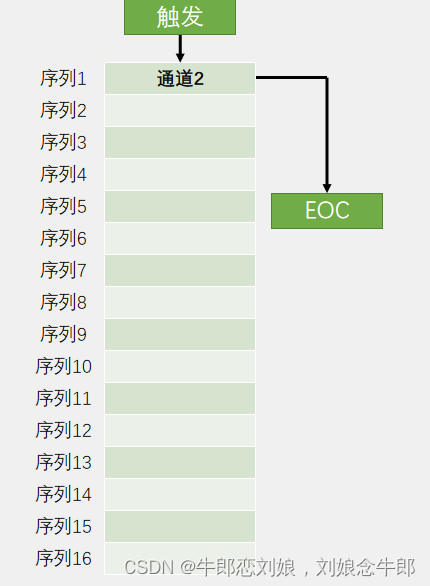
STM32f103入门(10)ADC模数转换器
ADC模数转换器 ADC简介AD单通道初始化代码编写第一步开启时钟第二步 RCCCLK分频 6分频 72M/612M第三步 配置GPIO 配置为AIN状态第四步,选择规则组的输入通道第五步 用结构体 初始化ADC第六步 对ADC进行校准编写获取电压函数初始化代码如下 Main函数编写 ADC简介 ADC…...

实训笔记8.28
实训笔记8.28 8.28笔记一、大数据计算场景主要分为两种1.1 离线计算场景1.2 实时计算场景 二、一般情况下大数据项目的开发流程2.1 数据采集存储阶段2.2 数据清洗预处理阶段2.3 数据统计分析阶段2.4 数据挖掘预测阶段2.5 数据迁移阶段2.6 数据可视化阶段 三、纯大数据离线计算项…...

机器学习笔记之最优化理论与方法(五)凸优化问题(上)
机器学习笔记之最优化理论与方法——凸优化问题[上] 引言凸优化问题的基本定义凸优化定义:示例 凸优化与非凸优化问题的区分局部最优解即全局最优解凸优化问题的最优性条件几种特殊凸问题的最优性条件无约束凸优化等式约束凸优化非负约束凸优化 引言 本节将介绍凸优…...

在Windows10上编译grpc工程,得到protoc.exe和grpc_cpp_plugin.exe
grpc是google于2015年发布的一款跨进程、跨语言、开源的RPC(远程过程调用)技术。使用C/S模式,在客户端、服务端共享一个protobuf二进制数据。在点对点通信、微服务、跨语言通信等领域应用很广,下面介绍grpc在windows10上编译,这里以编译grpc …...

一些测试知识
希望能起到帮助,博主主页: https://blog.csdn.net/qq_57785602/category_12023254.html?spm1001.2014.3001.5482 软件测试理论 测试的依据: 需求,规格说明,模型,用户需求等 什么是软件测试 描述一种来…...

Socket交互的基本流程?
TCP socket通信过程图 什么是网络编程,网络编程就是编写程序使两台连联网的计算机相互交换数据。怎么交换数据呢?操作系统提供了“套接字”(socket)的组件我们基于这个组件进行网络通信开发。tcp套接字工作流程都以“打电话”来生…...

css 分割线中间带文字
效果图 代码块(自适应) <div class"line"><span class"text">我是文字</span></div>.line{height:0;border-top:1px solid #000;text-align:center;}.text{position:relative;top:-14px;background-color:#…...

会不会激发对modern c++的新兴趣
可变参数好像很厉害的样子,会节省很多手写代码,让编译器自动帮我们生成代码 template<typename Fun, typename...Args> void invoke(Fun&& fun, Args&&...args) { fun(std::forward<Args>(args)...); } 任意函数包装器…...

Nginx服务器如何配合Java开发项目
Nginx服务器如何才能配合好相关的编程语言进行服务器搭建呢?下面我们就来看看有关的技术如何融合。希望大家有所收获。 在进行Nginx服务器建设的时候有很多语言的应用,其中Java 开发的web项目就是很常见的。下面我们就看看Nginx服务器如何才能与Java编程…...
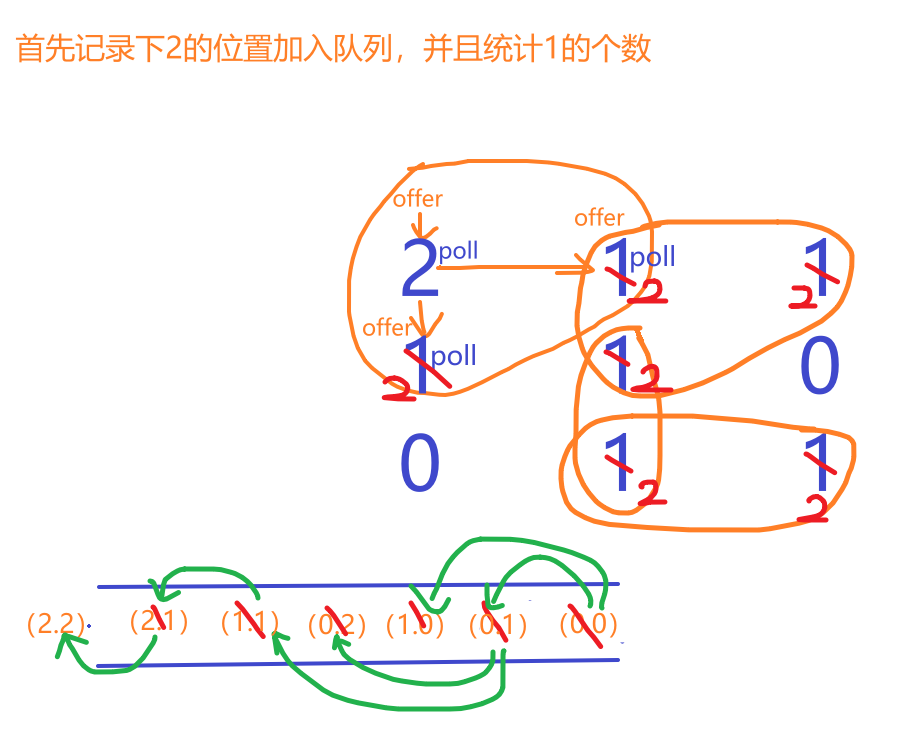
【LeetCode-中等题】994. 腐烂的橘子
文章目录 题目方法一:bfs层序遍历 题目 该题值推荐用bfs,因为是一层一层的感染,而不是一条线走到底的那种,所以深度优先搜索不适合 方法一:bfs层序遍历 广度优先搜索,就是从起点出发,每次都尝…...

K8s部署单机mysql
文章目录 一、K8s部署单机mysql1.1 说明1.2 不足 二、部署三、检查 一、K8s部署单机mysql 1.1 说明 定制配置数据存放在configMapmysql数据放在/opt/mysql目录下(/opt/mysql目录需要事先创建)root账号密码使用环境变量env服务暴露方式为nodePort,端口30336 1.2 不…...

Cesium1.95中高性能加载1500个点
一、基本方式: 图标使用.png比.svg性能要好 <template><div id"cesiumContainer"></div><div class"toolbar"><button id"resetButton">重新生成点</button><span id"countDisplay&qu…...
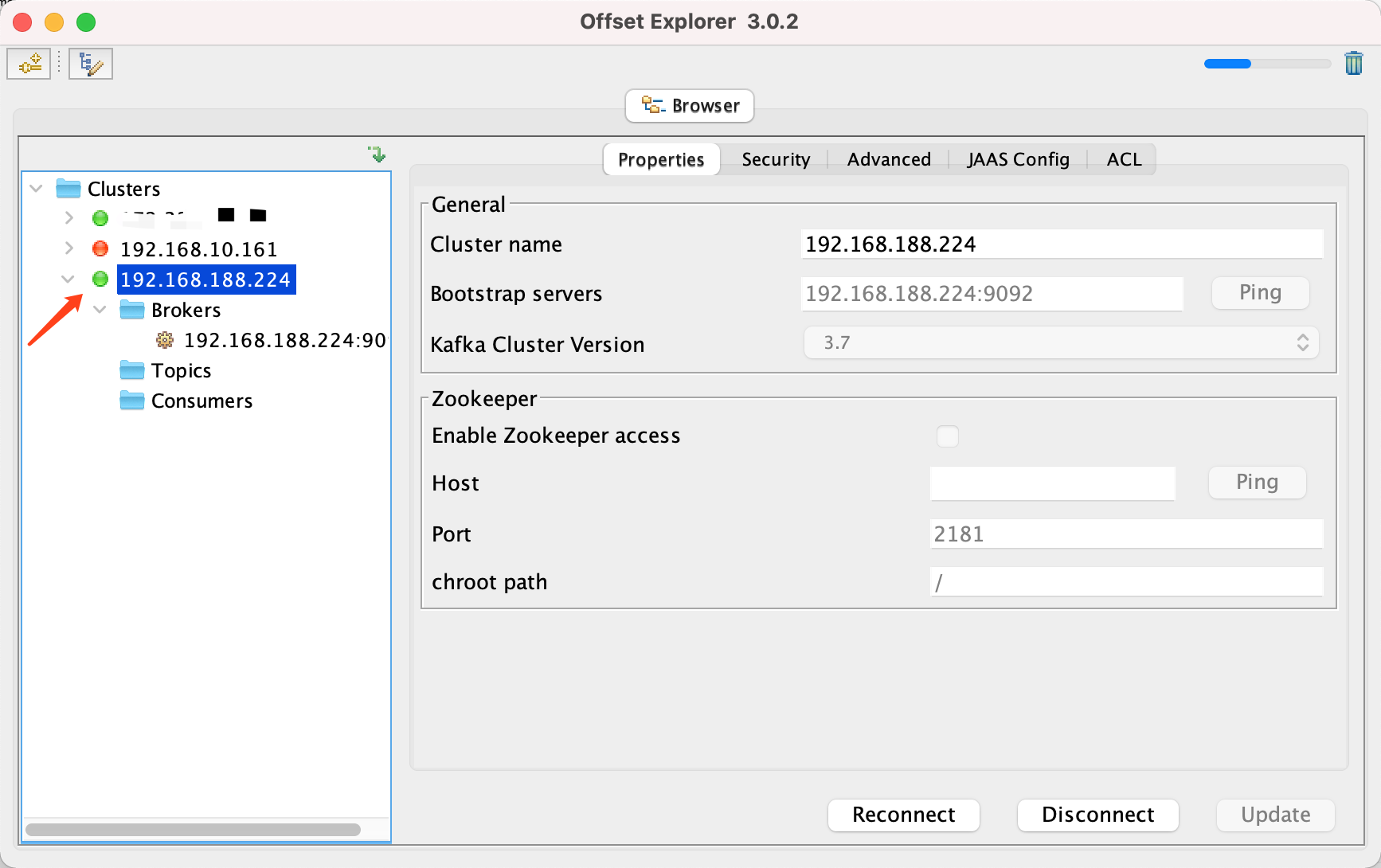
Docker 运行 Kafka 带 SASL 认证教程
Docker 运行 Kafka 带 SASL 认证教程 Docker 运行 Kafka 带 SASL 认证教程一、说明二、环境准备三、编写 Docker Compose 和 jaas文件docker-compose.yml代码说明:server_jaas.conf 四、启动服务五、验证服务六、连接kafka服务七、总结 Docker 运行 Kafka 带 SASL 认…...
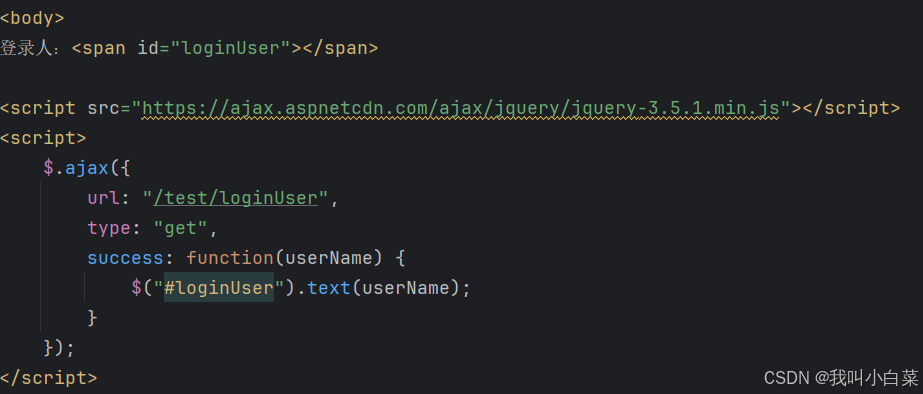
【Java_EE】Spring MVC
目录 Spring Web MVC 编辑注解 RestController RequestMapping RequestParam RequestParam RequestBody PathVariable RequestPart 参数传递 注意事项 编辑参数重命名 RequestParam 编辑编辑传递集合 RequestParam 传递JSON数据 编辑RequestBody …...

ArcGIS Pro制作水平横向图例+多级标注
今天介绍下载ArcGIS Pro中如何设置水平横向图例。 之前我们介绍了ArcGIS的横向图例制作:ArcGIS横向、多列图例、顺序重排、符号居中、批量更改图例符号等等(ArcGIS出图图例8大技巧),那这次我们看看ArcGIS Pro如何更加快捷的操作。…...
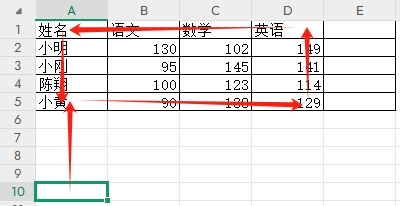
3-11单元格区域边界定位(End属性)学习笔记
返回一个Range 对象,只读。该对象代表包含源区域的区域上端下端左端右端的最后一个单元格。等同于按键 End 向上键(End(xlUp))、End向下键(End(xlDown))、End向左键(End(xlToLeft)End向右键(End(xlToRight)) 注意:它移动的位置必须是相连的有内容的单元格…...

Java线上CPU飙高问题排查全指南
一、引言 在Java应用的线上运行环境中,CPU飙高是一个常见且棘手的性能问题。当系统出现CPU飙高时,通常会导致应用响应缓慢,甚至服务不可用,严重影响用户体验和业务运行。因此,掌握一套科学有效的CPU飙高问题排查方法&…...

rnn判断string中第一次出现a的下标
# coding:utf8 import torch import torch.nn as nn import numpy as np import random import json""" 基于pytorch的网络编写 实现一个RNN网络完成多分类任务 判断字符 a 第一次出现在字符串中的位置 """class TorchModel(nn.Module):def __in…...

论文笔记——相干体技术在裂缝预测中的应用研究
目录 相关地震知识补充地震数据的认识地震几何属性 相干体算法定义基本原理第一代相干体技术:基于互相关的相干体技术(Correlation)第二代相干体技术:基于相似的相干体技术(Semblance)基于多道相似的相干体…...

Python+ZeroMQ实战:智能车辆状态监控与模拟模式自动切换
目录 关键点 技术实现1 技术实现2 摘要: 本文将介绍如何利用Python和ZeroMQ消息队列构建一个智能车辆状态监控系统。系统能够根据时间策略自动切换驾驶模式(自动驾驶、人工驾驶、远程驾驶、主动安全),并通过实时消息推送更新车…...

iview框架主题色的应用
1.下载 less要使用3.0.0以下的版本 npm install less2.7.3 npm install less-loader4.0.52./src/config/theme.js文件 module.exports {yellow: {theme-color: #FDCE04},blue: {theme-color: #547CE7} }在sass中使用theme配置的颜色主题,无需引入,直接可…...
